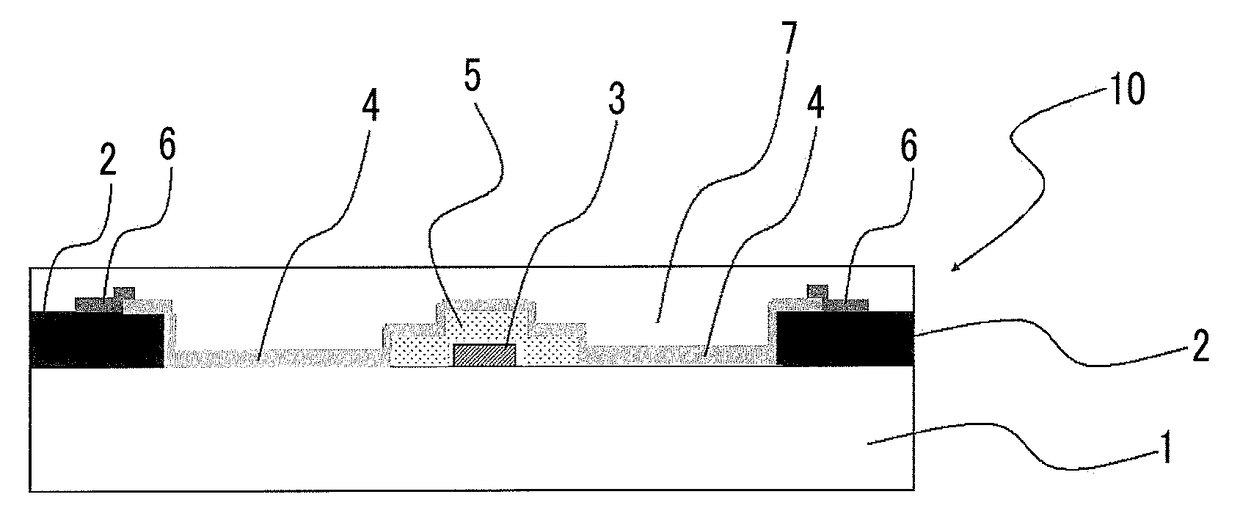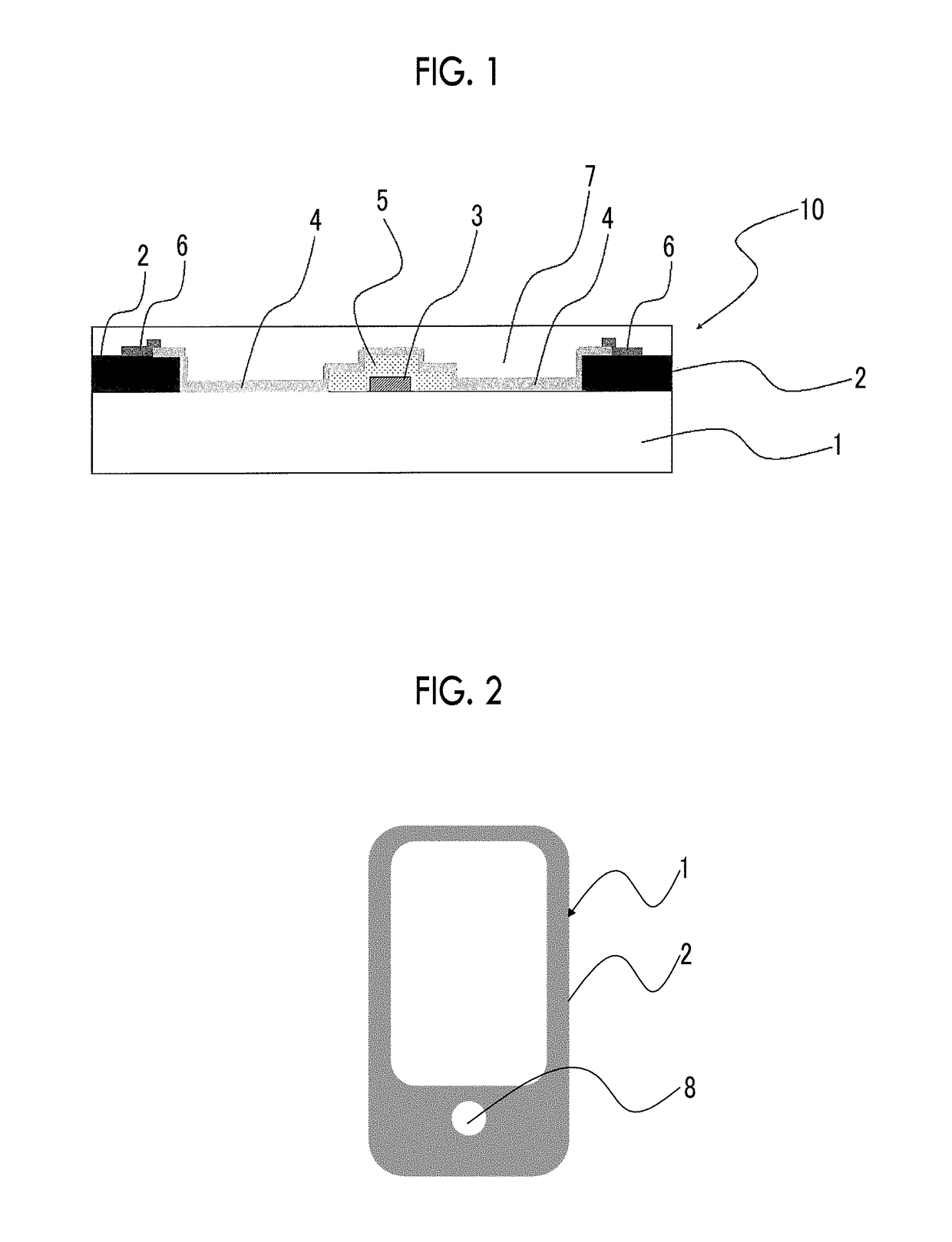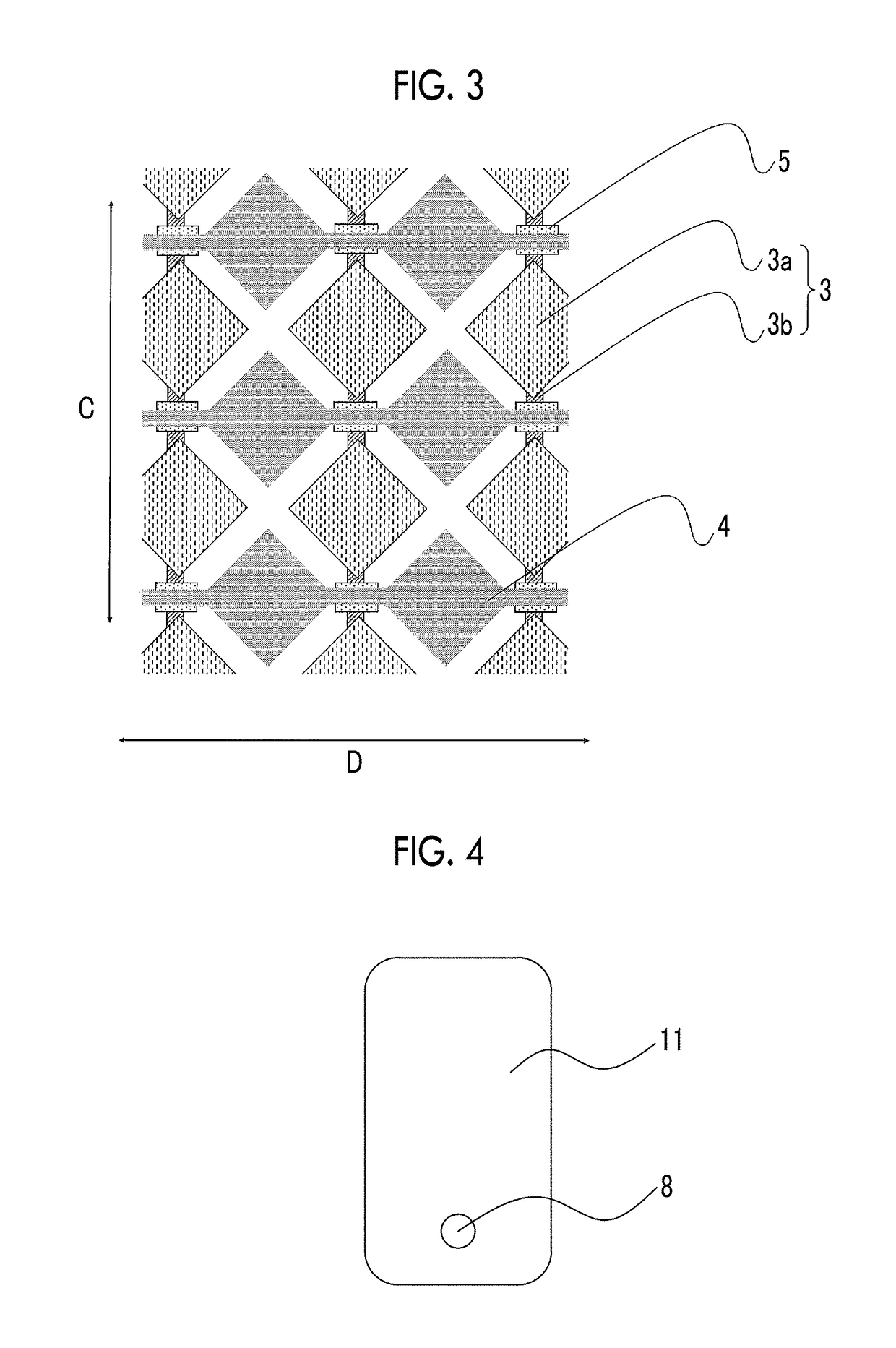Photosensitive transfer material, pattern formation method, and etching method
a technology pattern formation method, which is applied in the field of photosensitive transfer material, pattern formation method and etching method, can solve the problems of unsatisfactory heat-resistant rectangular properties, transfer film described, and deterioration of resist peeling properties after post-baking, and achieves excellent heat-resistant rectangular properties, etchant, and only a small amount of dust.
- Summary
- Abstract
- Description
- Claims
- Application Information
AI Technical Summary
Benefits of technology
Problems solved by technology
Method used
Image
Examples
synthesis example 1
Synthesis of PHS-EVE
[0495]An alkali-soluble resin (20 g, VP-8000, manufactured by Nippon Soda Co., Ltd.) and propylene glycol monomethyl ether acetate (PGMEA, 320 g) were dissolved in a flask and were distilled at a reduced pressure, and water and PGMEA were azeotropically distilled away. After it was confirmed that the water content was sufficiently decreased, ethyl vinyl ether (24 g) and p-toluene sulfonate (0.35 g) were added thereto and the components were stirred at room temperature for 1 hour. Triethylamine (0.28 g) was added thereto so as to stop the reaction. After ethyl acetate was added to the reaction solution and the reaction solution was further cleaned with water, ethyl acetate, water, and PGMEA of the azeotropic component were distilled away through reduced-pressure distillation, thereby obtaining a polymer PHS-EVE which was an alkali-soluble resin protected by an acid-decomposable group. The weight-average molecular weight of the obtained resin was 11,000. In additio...
synthesis example 2
Synthesis of PHS-THF
[0498]An alkali-soluble resin (15.6 g, VP-8000, manufactured by Nippon Soda Co., Ltd.) and propylene glycol monomethyl ether acetate (PGMEA, 100 g) were dissolved in a flask and were distilled at a reduced pressure, and water and PGMEA were azeotropically distilled away. After it was confirmed that the water content was sufficiently decreased, 2,3-dihydrofuran (2.7 g) and p-toluene sulfonate (0.015 g) were added thereto and the components were stirred at room temperature for 2 hours. Triethylamine (0.090 g) was added thereto so as to stop the reaction. After ethyl acetate was added to the reaction solution and the reaction solution was further cleaned with water, ethyl acetate and water were distilled away through reduced-pressure distillation, thereby obtaining a polymer PHS-THF which was an alkali-soluble resin having a protection ratio of 25 mol %. The weight-average molecular weight of the obtained resin was 12,000. In addition, the polydispersity was 1.13.
[0...
synthesis example 3
Synthesis of Polymer Novolac-EVE (1-Ethoxyethyl Protector)
[0501]A polymer was synthesized using the same method as in Example 1 of JP2003-98671A. The weight-average molecular weight of the obtained polymer novolac-EVE was 5,000. In addition, the polydisersity was 7.0.
[0502]
PUM
| Property | Measurement | Unit |
|---|---|---|
| thickness | aaaaa | aaaaa |
| temperature | aaaaa | aaaaa |
| thickness | aaaaa | aaaaa |
Abstract
Description
Claims
Application Information
 Login to View More
Login to View More - R&D
- Intellectual Property
- Life Sciences
- Materials
- Tech Scout
- Unparalleled Data Quality
- Higher Quality Content
- 60% Fewer Hallucinations
Browse by: Latest US Patents, China's latest patents, Technical Efficacy Thesaurus, Application Domain, Technology Topic, Popular Technical Reports.
© 2025 PatSnap. All rights reserved.Legal|Privacy policy|Modern Slavery Act Transparency Statement|Sitemap|About US| Contact US: help@patsnap.com



